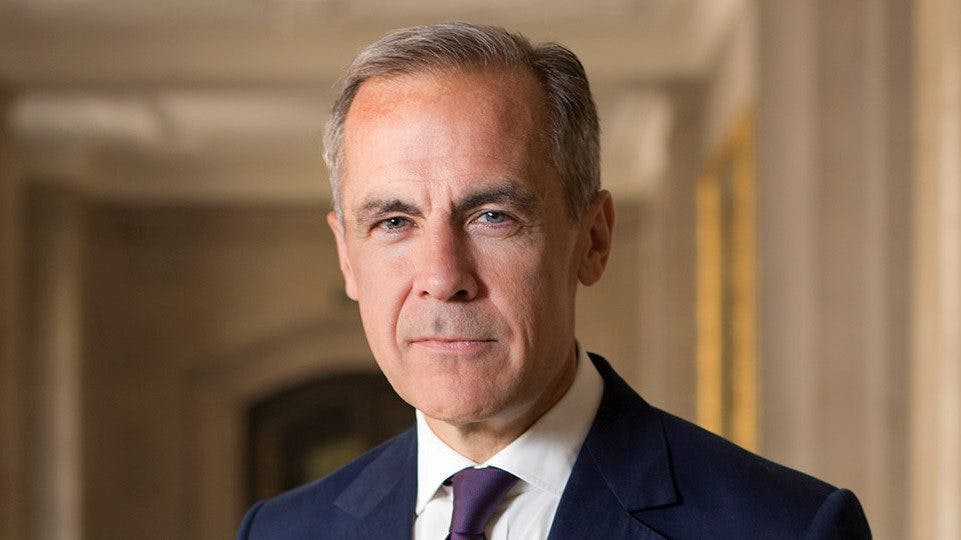Former Bank of England Governor Throws Support Behind CBDCs
In a speech to the Bank of International Settlements, Mark Carney, the former governor of the Bank of England and the Bank of Canada argued that the further integration of stablecoins into the global economy would give big tech too much power in the economy and would be difficult to unwind.

Mark Carney
- In a speech at the Bank of International Settlements, Mark Carney argued for CBDCs to keep control of money away from big tech.
- In contrast, Federal Reserve Vice Chair Randal Quarles argued that CBDCs are too risky and have unclear benefits at the moment.
Two of the most prominent names in central banking have very different opinions on central bank digital currencies (CBDCs) and stablecoins.
In a speech to the Bank of International Settlements, Mark Carney, the former governor of the Bank of England and the Bank of Canada argued that the further integration of stablecoins into the global economy would give big tech too much power in the economy and would be difficult to unwind.
“We should be wary of path dependence and locking in existing advantages of tech companies via the payments system. There are powerful network effects in both social networks and money. If combined, these could be mutually reinforcing. Convenience once established may be hard to unwind in the Uberisation of money,” he said.
Carney also said that integrating stablecoins into the global economy can pose significant structural risks. The industry should be heavily regulated with strong capital and liquidity requirements in addition to consumer protection rules that allow for stablecoin holders to be paid in fiat currency on demand, he added.
“There’s been two systemic crises in money funds in little more than a decade,” said Carney. “In baseball, it’s three strikes and you’re out. In cricket, it’s only the equivalent of one. For systemic payment systems, one is too many.”
Carney also argued that if stablecoins become heavily regulated, the difference between them and CBDCs would begin to blur. “If that means – as it must – very rigorous oversight and rules for private stablecoins, what would then differentiate them from CBDCs?” he asked.
Federal Reserve Vice Chair Randal Quarles, in contrast, believes that the benefits of CBDCs aren’t clear enough to warrant the investment and the “considerable challenges for the structure of our banking system” currently aren’t worth the trouble. He also pointed out that the tools to counter money laundering for a CBDC would pose significant challenges to user privacy.
“An arrangement where the Federal Reserve replaces commercial banks as the dominant provider of money to the general public could constrict the availability of credit, fundamentally alter the economy, and expose the public to a host of unanticipated, and undesirable, consequences, he said.
Quarles said that “we do not need to fear stablecoins,” and, if anything, the popularity of US-dollar denominated stablecoins only reinforces the USD’s hegemony in global finance.
Looking to China
The People’s Bank of China’s CBDC project, the eCNY, is the furthest along of all the efforts and while Beijing has said that it doesn’t intend for its CBDC to challenge the US dollar, other nations are watching closely.
“If it launches a CBDC, China will be armed with huge social infrastructure,” former Bank of Japan governor Toshihide Endo said in an interview with Reuters. “It would be a move hard to ignore for other nations. Japan and other advanced nations will face the tough question of how quickly they should follow.”
A prototype of a US CBDC, developed by the Boston Fed and MIT, is expected to be unveiled in July along with a white paper that outlines the Fed’s position on the topic.






